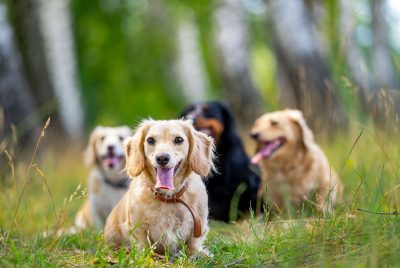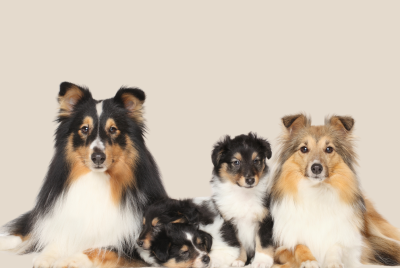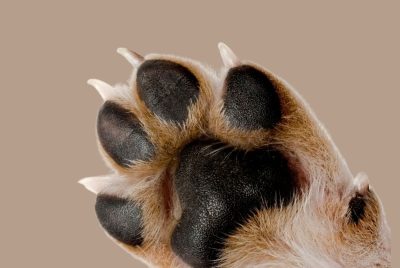What does F1B Goldendoodle mean?
Wondering what does F1B Goldendoodle mean? A Goldendoodle is a popular mixed-breed dog that is a cross between a Golden Retriever and a Poodle. Goldendoodles have become increasingly popular over the past couple of decades due to their friendly, intelligent, and low-shedding qualities.
Within the broad Goldendoodle type, there are several generations and crosses that produce slightly different traits and appearances in the puppies.
Understanding the terminology for these generations can be confusing for those new to Goldendoodle breeding. One term you may come across is “F1B Goldendoodle.” But what does F1B Goldendoodle mean?
Origins of the Goldendoodle
The Goldendoodle breed was first intentionally developed in the 1990s, when breeders realized that crossing a Golden Retriever with a Poodle produced puppies with superb dispositions and low-shedding coats.
Australian breeders are credited with first deliberately breeding Goldendoodles in the early to mid 1990s. North America soon followed suit, and Goldendoodles quickly grew in popularity as an ideal family dog.
The first generation of Goldendoodle is called F1. This is a cross between a purebred Golden Retriever and a purebred Poodle. Poodle genes give the Goldendoodle a low-shedding or non-shedding coat, while Golden Retriever genes contribute to the dog’s golden color and affable personality.
Generations of Goldendoodle breedings

There are several generations in Goldendoodle breeding. Each successive generation exhibits slightly different physical traits and temperaments. Here is an overview of the main Goldendoodle generations:
F1 generation
The very first generation produced by crossing a purebred Golden Retriever with a purebred Poodle is termed the F1 generation. This stands for “filial 1.”
F1 Goldendoodles have one purebred Golden Retriever parent and one purebred Poodle parent. Since the parents are from different breeds, F1 Goldendoodles demonstrate something called “hybrid vigor.” This refers to increased health, vitality, and intelligence.
However, F1 Goldendoodles still have a moderate amount of shedding. Their coats also tend to be irregular, ranging from wavy to curly.
F1B generation
This brings us to the F1B generation. The “B” in F1B stands for “backcross”.
An F1B Goldendoodle is produced by breeding an F1 Goldendoodle with either a Poodle or a Golden Retriever. Specifically:
- F1 Goldendoodle bred with a Poodle = F1B Goldendoodle
- F1 Goldendoodle bred with a Golden Retriever = F1B Goldendoodle
By breeding the F1 dog back to one of its original parent breeds, the resultant F1B puppies gain more uniform coats and less shedding. They also demonstrate a consistent generation of hybrid vigor.
Why was the F1B cross created?
F1B Goldendoodles were developed to achieve several breeding goals:
- Reduce shedding – Breeding the F1 Goldendoodle back to a purebred Poodle increases the percentage of Poodle genetics. Since Poodles are a non-shedding breed, this increases the chances of producing low- to no-shed puppies.
- Achieve consistent coats – F1 Goldendoodle coats can be irregular, ranging from wavy to curly. Breeding back to a Poodle helps achieve the coveted fleece or wool coat type in all puppies.
- Maintain hybrid vigor – While Poodle genes improve the coat, breeding back to just a Poodle can lose some of the Golden Retriever traits like trainability and family-friendly temperament. F1B dogs keep a good balance of vigor from both original parent breeds.
- Produce desirable sizes – Breeders can select standard Poodle genes to breed larger F1B Goldendoodles, or miniature Poodle genes for smaller F1Bs.
So in summary, the F1B cross gave breeders greater control over coat types, shedding, and size in Goldendoodle litters.
F2 generation
The F2 generation is produced by breeding two F1 Goldendoodles together.
Since both parents are F1, the puppies end up with a more uniform appearance and temperament. However, there is less hybrid vigor, which can lead to more health issues.
F2 Goldendoodles have wavy to curly fleece coats that shed minimally. Their size can vary greatly depending on the size of the F1 parents.
F2B generation
F2B Goldendoodles come from breeding an F1 Goldendoodle with an F1B Goldendoodle. The “B” again stands for backcross.
Like F1B dogs, F2B Goldendoodles demonstrate very curly, non-shedding coats. Their Genes are 75% Poodle and 25% Golden Retriever. This makes them ideal for families with moderate dog allergies.
F2B dogs are highly intelligent and easy to train. Their temperament continues to favor the gentle, family-oriented nature of the Golden Retriever.
F3 generation
F3 Goldendoodles have two Goldendoodle parents who were both F1 crosses. Specifically:
- F3 = F1 Goldendoodle bred with F1 Goldendoodle
At the F3 generation, the puppies are no longer considered hybrids. Rather, they start to be akin to a brand new dog breed.
F3 Goldendoodles have a consistently curly, non-shedding coat. They maintain the Golden Retriever’s calm, friendly personality. Health and hybrid vigor are stabilized across litters.
Multigen generation
Any Goldendoodle that is bred from F3 or later generations is often referred to as Multigen. This stands for “multiple generations”.
Multigen Goldendoodles have the most uniformity in appearance, coat type, and temperament. They meet the benchmarks of a true dog breed since their genetics have been stabilized over multiple generations.
Appearance and traits of an F1B Goldendoodle

Now that you understand the different Goldendoodle generations, what are some of the typical qualities of F1B Goldendoodles specifically? Here is an overview of common F1B Goldendoodle characteristics:
Coat type
F1B Goldendoodles almost always have a curly or wavy fleece coat like that of a Poodle. Their curls are tighter than those of an F1 Goldendoodle.
The fleece coat of the F1B feels soft and plush. It does not have the harsher feel of Poodle fur.
Shedding
One of the key reasons F1B Goldendoodles were bred is for their non-shedding coats.
They inherit the low-dander, low-shedding qualities of the Poodle rather than the moderate shedding of Golden Retrievers.
This makes F1B Goldendoodles a top choice for families with dog allergies.
Size
F1B Goldendoodle size depends on the size of the Poodle used in the initial F1 breeding:
- Standard Poodle genes produce larger F1Bs, about 45-75 lbs full grown
- Miniature Poodle genes produce smaller F1Bs, about 25-45 lbs full grown
- Toy Poodle genes produce tiny F1Bs under 25 lbs full grown
Ask the breeder about the size of the Poodle parent to determine expected F1B size.
Color
F1B Goldendoodles showcase a range of colors including:
- Cream or blonde
- Golden or red
- Chocolate brown
- Black
- Parti (spotted)
- Phantom (lighter color on legs, chest, muzzle)
Cream and golden tones are most common, but all Poodle coat colors can emerge in F1Bs.
Temperament
The typical F1B Goldendoodle is highly intelligent, energetic, and endearing. From the Golden Retriever, they inherit a sweet, easygoing nature that makes them a joyful family companion.
F1B Goldendoodles are eager to please, bond strongly with their people, and get along well with children and other pets. They are usually playful and outgoing. Early socialization and training help ensure an F1B Goldendoodle grows into a polite, well-adjusted dog.
Pros and Cons of An F1B Goldendoodle
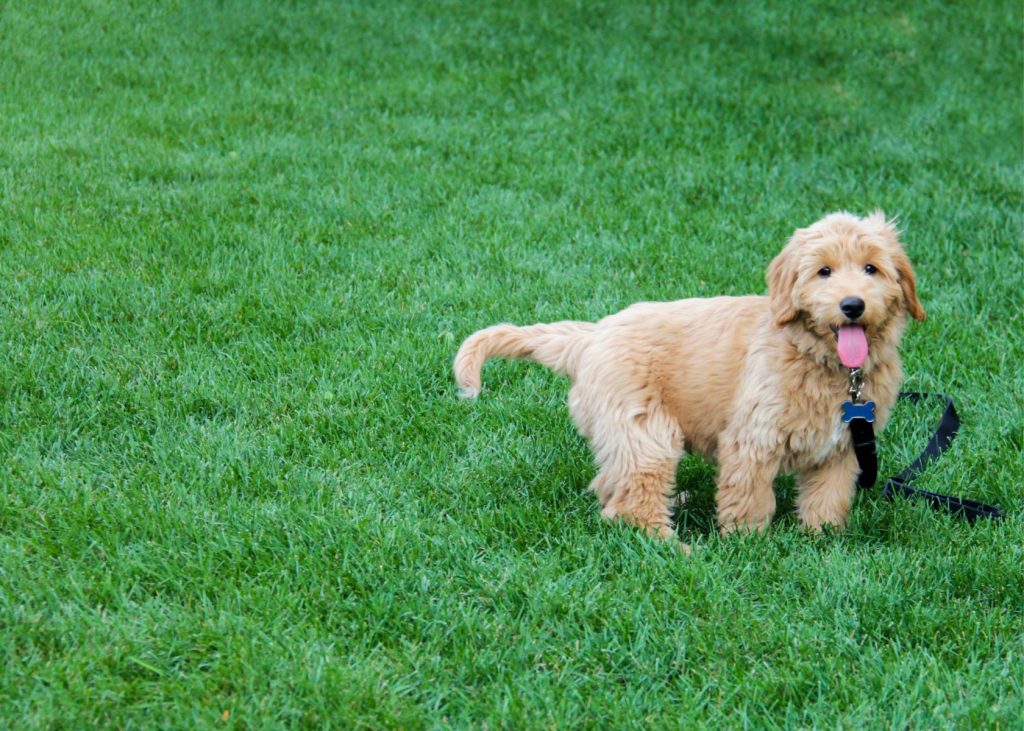
F1B Goldendoodles have many endearing traits. But are there any downsides to consider with this hybrid dog? Here are some pros and cons to weigh if considering an F1B Goldendoodle:
Pros
- Extremely low to no shedding
- Great for allergy sufferers
- Adaptable to apartment living
- Eager to please and highly trainable
- Affectionate, gentle nature
- Minimal doggy odor
- Playful and energetic
- Smart and focused
- Gets along with other pets
Cons
- Requires frequent grooming and coat maintenance
- Can develop separation anxiety if left alone for long periods
- Prone to mouthiness and chewing as a puppy
- High energy level requires lots of exercise
- Potential for inherited health issues like hip dysplasia
- May not do well in hot climates due to thick coat
- Can be a picky eater
As long as you are prepared to provide ample activity, training, attention and grooming, an F1B Goldendoodle can make a delightful pet. Their non-shedding coat makes them ideal for many families.
Finding a reputable F1B Goldendoodle breeder
Since F1B Goldendoodles are a popular hybrid dog, it’s important to locate a responsible, ethical breeder. Warning signs of an irresponsible breeder include:
- Having multiple litters available
- Breeding dogs at every heat cycle
- Refusing to show parents’ health testing
- Unable to provide pedigree information
- Willing to ship puppies sight-unseen
- No interview or application process
- Inadequate socialization of puppies
Look for F1B breeders who:
- Have waiting lists for litters and carefully screen applicants
- Test all parents for genetic issues like hip dysplasia
- Socialize pups extensively with sights, sounds, people
- Only breed occasionally and space out pregnancies
- Are involved with dog shows, clubs, organizations
- Provide health guarantees and return policies
- Are available for lifetime breeder support
Be prepared to wait 6 months to a year for a pup from a responsible F1B Goldendoodle breeder. Avoid those who make impulsive breeding decisions or operate “puppy mills.” Take time finding an excellent match for your family.
Cost of an F1B Goldendoodle puppy
F1B Goldendoodle puppies typically cost between $2000-$5000 USD each. Several factors impact the final price:
- Coat color and patterns
- Size of parents
- Gender
- Appearance conformity
- Location and breeder reputation
- Additional health testing
In general, rarer colors and smaller sizes cost more. Show quality pups are pricier than pets. Additional genetic or health screenings can increase the asking price.
On average though, plan to budget $2500-$3500 to purchase your F1B Goldendoodle puppy from a top-notch breeder.
Caring for an F1B Goldendoodle
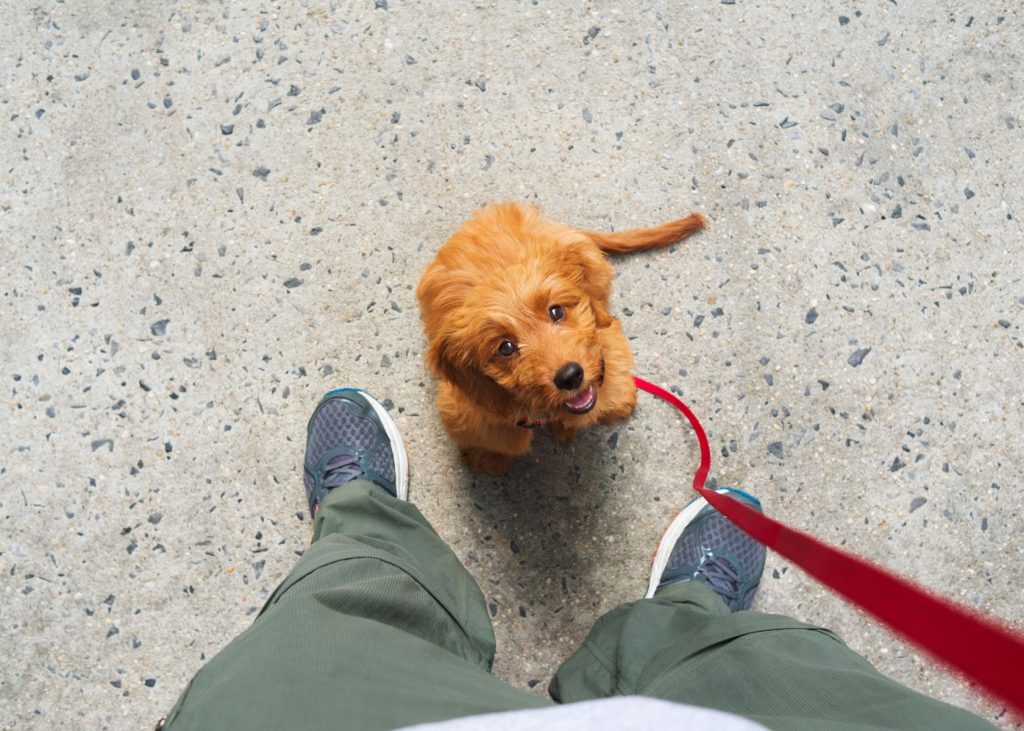
F1B Goldendoodles have some unique care needs, especially related to their high-maintenance coats. Be prepared to invest time into the following:
- Brushing – Requires 15-30 minutes of daily brushing and combing to prevent matting. Hire professional grooming every 6-8 weeks.
- Bathing – Bathe monthly or as needed to keep coat clean. Use moisturizing dog shampoo. Air dry thoroughly.
- Exercise – Needs 45+ minutes of vigorous activity daily such as jogging, hiking, fetching, swimming. Prefers interactive play over solitary walks.
- Training – Extremely responsive to positive reinforcement training. Enroll in puppy and obedience classes early on.
- Dental care – Brush teeth, provide chew toys, perform annual cleanings to maintain dental health.
- Nails – Trim nails every 2-3 weeks to prevent overgrowth and splitting.
- Ears – Check and clean ears weekly. Pluck excess hair to improve airflow and prevent infections.
- Diet – Feed high-quality dry kibble divided into 2-3 meals per day. Limit table scraps.
With some extra care devoted to their grooming routine, F1B Goldendoodles make delightful, adaptable pets for all types of families.
Training and exercising an F1B Goldendoodle
F1B Goldendoodles are highly energetic dogs with lots of intellectual curiosity. Proper training and exercise is key to managing their exuberance.
Training
Intelligent and eager to please, F1B Goldendoodles thrive with positive reinforcement training methods. Their sensitive nature does not respond well to punishment or harsh corrections.
Early socialization and obedience classes prevent problem behaviors. Use food rewards, praise, and play to teach commands. Maintain consistency across all family members.
Crate training assists with housebreaking and prevents destructive chewing habits. Puzzle toys and “jobs” help provide mental stimulation.
Exercise
Plan to provide a minimum of 45-60 minutes of vigorous physical activity every day. Ideal exercise outlets include:
- Playing fetch or frisbee
- Hiking and jogging
- Agility courses
- Swimming
- Active games and walks
F1B Goldendoodles also enjoy canine sports like flyball, dock diving, rally obedience, and more. This provides both physical and mental exercise.
Without adequate activity, F1B Goldendoodles may resort to undesirable behaviors like barking, digging, chewing, or hyperactivity. Prevent this by maintaining an active lifestyle with your four-legged companion.
Health issues to watch for in F1B Goldendoodles
While generally healthy, F1B Goldendoodles are prone to some inherited conditions. Discuss testing with your breeder and watch for:
- Hip and elbow dysplasia – Malformation of joints. Causes arthritis and lameness.
- Allergies – Commonly food allergies cause itchy skin or ears.
- Ear infections – Floppy ears trap moisture, increasing infection risks.
- Eye diseases – Includes cataracts, progressive retinal atrophy, and eyelash issues.
- Hypothyroidism – Low thyroid hormone production causing obesity, lethargy, and hair loss.
- Bloat – Accumulation of gas and twisting of the stomach. Life-threatening condition.
- Cardiac issues – Subaortic stenosis and mitral valve disease. Causes murmurs or fainting.
- Diabetes – Failure to regulate blood sugar levels. Requires insulin treatment.
Careful screening by breeders and proactive wellness vet visits catch issues early on. Keep your F1B Goldendoodle lean and active to prevent certain diseases. Know the warning signs to look out for.
Is an F1B Goldendoodle right for you?
The F1B Goldendoodle is a top choice for many dog lovers due to the breed’s intelligence, trainability, and hypoallergenic coat.
However, F1B Goldendoodles require significant time, energy, and grooming commitments from their owners.
This breed thrives with active families who can integrate the dog into their lifestyle. If you lead a more sedentary life or work long hours away from home, the energetic F1B will not suit your needs.
These dogs cherish being with their family and may develop separation anxiety if left alone for long stretches daily. They require attention, playtime, training, and companionship.
If you can provide the activity, stimulation, and care this hybrid breed needs, an F1B Goldendoodle will reward you with years of fun, affectionate companionship!
Conclusion
In summary, an “F1B Goldendoodle” is a Goldendoodle that has been backcrossed, meaning bred back to one of its original parent breeds. Specifically, an F1 Goldendoodle is bred with either a Poodle or Golden Retriever to produce the F1B generation.
The “B” in F1B stands for backcross. F1B Goldendoodles exhibit more uniform coats and less shedding than F1 or F2 generations. Their genetics are about 75% Poodle.
Typical F1B Goldendoodles have a curly, non-shedding fleece coat. They display high intelligence and trainability alongside a gentle, family-friendly temperament. Their care requires time and effort devoted to grooming, training, exercise, and attention.
When purchased from a responsible breeder, socialized properly, and cared for appropriately, F1B Goldendoodles make delightful companions. Their low-dander coats provide the perfect solution for families with moderate dog allergies.


